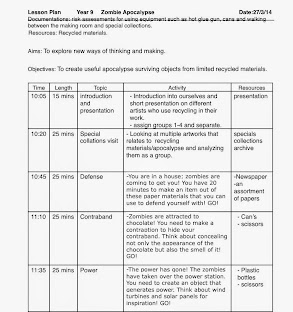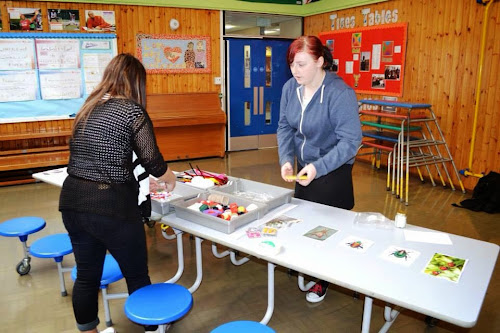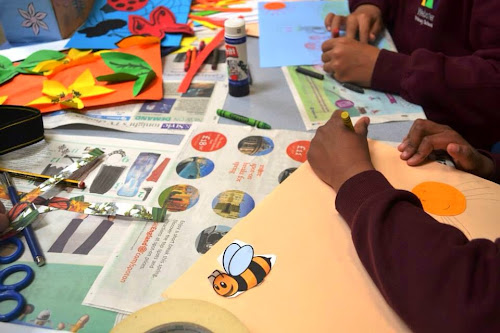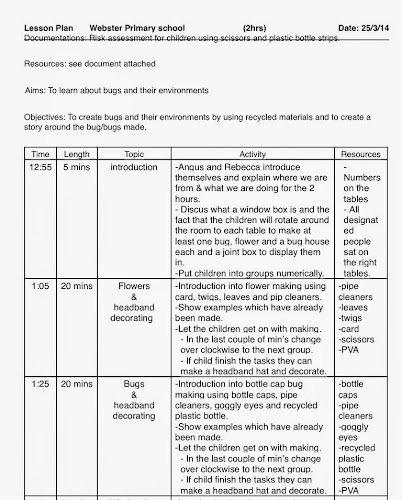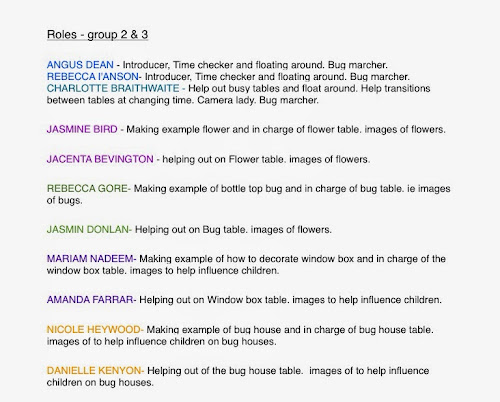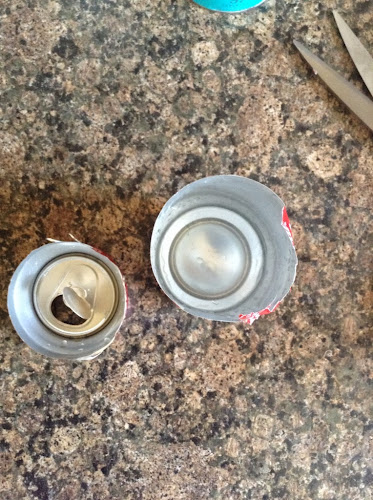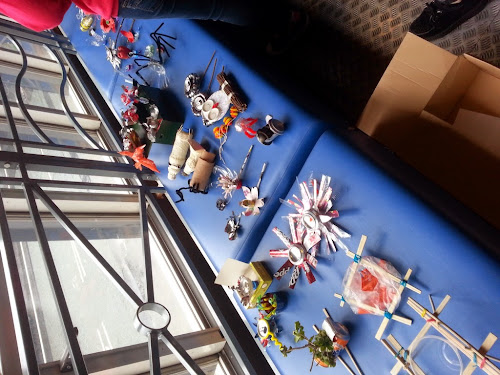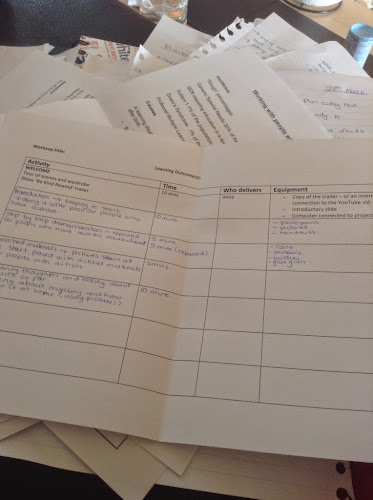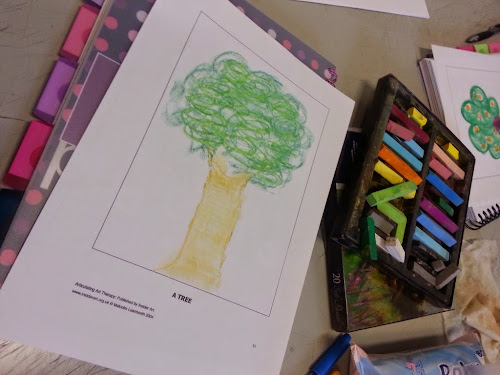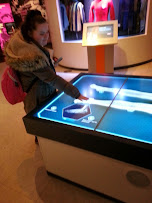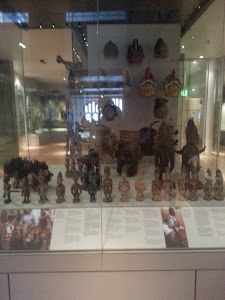"A: (Thank you for lining up so nicely year 3. So what’s going to happen now is I’m going to come down the line and give you all a number from 1 to 4 that I want you to remember. When you go into the room I want you to find the table with your number on it and sit down ok? Everybody got that? Right….)
Ok so, hello year 3 and welcome to something a bit different today. I am Angus, this is Becky, these lovely people will introduce themselves to you shortly (gestures wildly). We’re all from MMU, we’re all art students and what we’re going to be doing with you today is making and filling some window boxes to go on display outside the new Birley Fields Building. So would someone like to tell everyone what a window box is?
B: Yep that’s right (holds up window box) this is the window box here and we’ve got a few different activities we’re going to be doing with you to transform this into something much more exciting. You’re going to be decorating the box, you’re going to be making flowers and you’re going to be making your own bugs and bug houses. Everybody will get a go at everything so don’t worry that’ll you’ll be missing out on any part of today, there’s going to be a different table for each activity and you’re going to go round and try everything.
A: And the most important thing we’d like you to do today is be as creative and imaginative as you possibly can. When you go to your table there are going to be examples that we’ve done of the bugs and flowers and everything but that doesn’t mean yours has to look like ours, and it doesn’t mean that you have to make just one thing at each table. If you want to make the best, biggest craziest bug with 7 legs and 5 eyes and pincers go for it, if you want to make an entire forest floor of flowers then do it,
B: and if you have an idea but you’re not sure how to do it, there are going to be some of us on each table and some of us floating around to help you. (So what I’m going to do now is give each of you a number from 1-4 and once I’ve given you all a number we’d like you to move to the table with that number on it. And then these guys are gonna come and explain what you’ll be doing.)
A: One last thing. There are going to be two things to pay attention to today, firstly if one of us does this (demonstrate) that means we’d like you to be quiet and listen for a minute ok? The second thing is this (blow whistle) and that means you need to stop what you’re doing because it’s time to move to the next table. Ok get started.
A: Flutter like a Butterfly. Squirm like a worm. Buzz like a bee. Bounce like a grasshopper.
B: OK guys if you could just stop what you’re doing and look this way for a second. You should have all had a go at everything now, don’t worry if you haven’t finished the one you’re on. So what we’d like to happen now is when we tell you, to go and collect you’re bugs one table at a time and sit back down. Flower table go, bug table go etc.
A: So does everybody have their bug? Now have a look at your bug and what I want you to think about is how does your bug move, does it slither, does it hop, does it maybe stomp around? And what sounds does it make? Ok. Everybody got an idea? Ok well then I think you should all stand up and show us how your bug moves and what it sounds like, maybe even how it dances. Everybody stand up, (start music) and move like a bug! (Blow whistle to finish)
B: Right so you’ve just thought a bit about your bug, and now on this worksheet we’ve given you we’d like you to think a bit more about either them, or about your flower, whichever you like. And we’d like you to do some drawing and a little bit of writing to tell us all about them. And once you’ve done that then we’re all going to finally put all of your work together to make the window boxes.
A: Right year 3 it’s now time for all of your amazing work to come together to make these window boxes so (not sure how we’re doing this bit, this is my suggestion) if this table wants to get everything they’ve made today, then this table etc. So now you’re going to come up and table at a time and put these window boxes together. (Get them to carry on with worksheets/hats while each table does this, and photograph the process of each table walking their bug into the box?)
B: Well thank you year 3, you’ve all done some amazing work today and you’ve been a great group to work with. Have you all enjoyed yourselves? Good you should all be proud of yourselves, well done and off you go."
